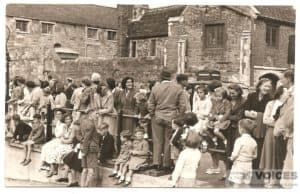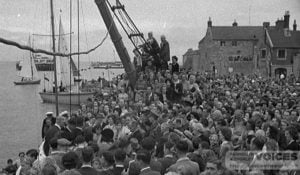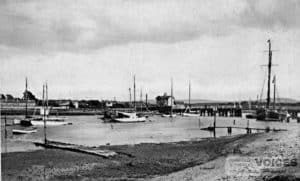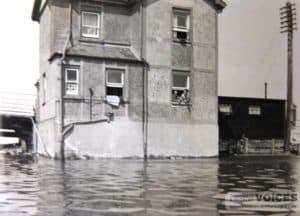I shall never forget the day we had to deal with a fifty foot sort of Edwardian steam yacht. Apparently they’d gone out the harbour and something had fallen off – I think it was a clock or the barometer. The husband and wife were having a bloody good old argument about it and they hit the Admiralty buoy out there, and so they comes in screaming and shouting.
We managed to get a line. They got the bow to about here, and of course the tide was going out and I managed to put a line on there on to the quay. People with pumps came from everywhere. They even got the Fire Brigade down here. Poor old Bob Woodford went and got this pump off Vic. He went running down this little slip. Course he forgot the bloody thing ended, and the people on the boat just managed to grab hold the pump before Bob disappeared off the end.
That’s where Cecil Doe, George Weston and Jack Harwood used to keep their sailing dinghies, their Enterprises, GP14s and stuff. We used to go down there lots of times, find a dinghy with an oar, scull up to the top of the quay or up the top of the harbour if there was westerly wind blowing, and either Al or myself would stand up with our jackets wide open, and one of us would steer with the oar while the other one stood with their jacket and sail down the harbour. Les Turner b 1944






